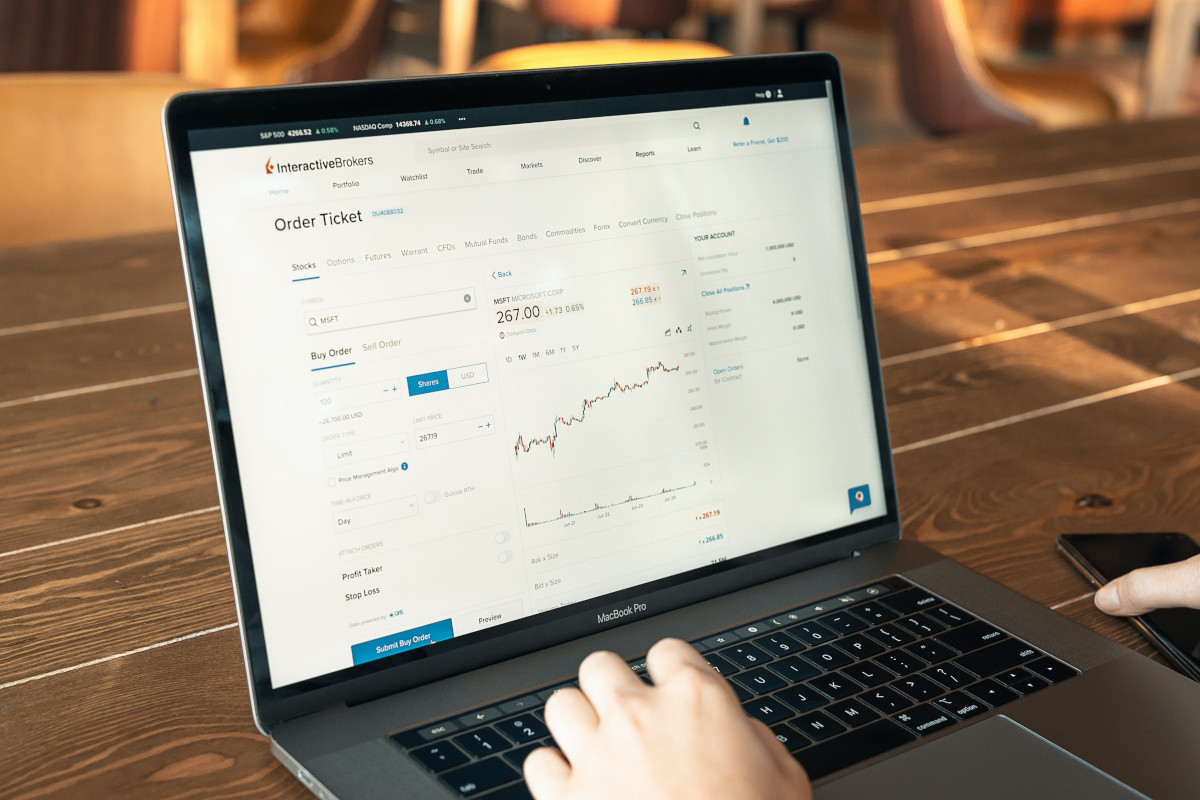What are the benefits of trading stock options? If you’re considering learning how to buy and sell options, you’re making a great decision. This investment style offers a host of advantages to traders. And in this complete guide, we’re going to cover them all.
Leverage, low risk, diversification, flexibility, low capital requirements, and tax advantages are all reasons more and more traders are making options trading a part of their investment strategy. Whether you use options as a simple means of hedging other positions you have or you want to use options to earn additional income, you’ll feel a lot more confident in your next steps by the time you finish reading this article.
Before we get into the benefits of options trading, let’s talk about the basics of trading options for beginners.
[featured_courses_options]
A Brief Introduction to Stock Options Trading
If you haven’t already read our beginner’s guide on how stock options work, we encourage you to do so. It’s a great entry point into this style of trading. But we’ll summarize the basics below.
Essentially, options contracts are an investment vehicle you can purchase on the stock market. These contracts give you the right – but not the obligation – to buy or sell an underlying asset at a predetermined price point.
When you purchase options contracts, you’re making a bet on how you expect a stock’s price to move before the stock option expiration date, at which point the contract becomes null and void. If your bet proves to be accurate, you can earn a profit based on just how much that stock price moves from the strike price (the predetermined price point in your options contract).
There are two basic types of options contracts:
- Put options grant you the right to sell an underlying stock at a pre-determined price. You purchase put options when you expect the price of a stock to fall in value. When that happens, you can then exercise your option to sell that stock at a premium to the market. For example, if you bought a put contract with a strike price of $10, and the price drops to $5, you can sell shares for a profit of $5/each.
- Call options grant you the right to buy an underlying stock at a pre-determined price. You take the opposite stance here – expecting the stock price to exceed the strike price in your contract, so you can then purchase shares at a discount. Going back to the example above, if you bought a call contract with a strike price of $10, you want the stock price to rise above $10 – allowing you to purchase shares at a lower price point before flipping them for a profit (or holding them long term).
Those are the basics of options contracts – but now, let’s get into what you came here for – to learn the benefits of trading stock options.
What are the Benefits of Trading Stock Options?
So, what are the benefits of trading stock options?
Just based on that quick introduction above, it’s clear to see that these investment vehicles are a bit more complex than traditional swing trading strategies. Is it worth the extra work and complexity? Absolutely!
First and foremost, you can get started trading with a small account.
Low Capital Requirements
One of the most significant benefits of trading stock options is that it requires relatively low capital requirements. Unlike trading stocks, which can require substantial amounts of capital to buy or sell, trading options allow you to control a larger amount of stock with a relatively small investment. This makes options trading more accessible to traders with smaller accounts or those who are just starting in the market.
For example, if you wanted to buy 100 shares of a stock trading at $100 per share, you would need to invest $10,000. However, if you instead bought a call option for the same stock with a strike price of $100, you might only need to invest $1,000 or less. This is because options are priced based on several factors, including the stock price, strike price, time until expiration, and volatility, among others.
Lower capital requirements can be especially useful for traders who are still learning the market and may not have large amounts of capital to invest. By using options, you can take advantage of potential market movements without putting all your capital at risk. And, speaking of risk – that’s another benefit of options trading.
Limited Risk
One of the main benefits of options trading is that your risk is limited to the premium you pay for the option. This means that even if the underlying stock price falls to zero, you can only lose the amount you paid for the option. This limited risk can be especially useful when trading in volatile markets or when using options to hedge existing positions.
For example, imagine you own 100 shares of a stock that you’re concerned might drop in price. You could buy a put option with a strike price below the current market price of the stock. If the stock does fall, the put option will increase in value, offsetting some of the losses from the stock position. However, if the stock does not fall, your risk is limited to the premium you paid for the put option.
It’s important to note that when selling options, your risk is not limited, and you could potentially face significant losses. It’s crucial to have a solid understanding of the risks involved when selling options. Our guide on risk management options trading will help you maximize your upside while minimizing your downside.
Leverage
Another significant advantage of trading stock options is leverage. Leverage allows you to control a larger position than you could with just your available capital. Essentially, options give you the ability to amplify your gains while limiting your potential losses.
For example, imagine you have $1,000 to invest in a stock. With that amount of capital, you might be able to buy 10 shares of a stock trading at $100 per share. However, if you instead bought a call option with a strike price of $100 and a premium of $1 per share, you could control 100 shares of the same stock with the same $1,000 investment. This means that if the stock price rises, your potential profits will be much larger than if you had simply bought 10 shares of the stock.
However, leverage can also increase your potential losses if the market moves against you. It’s important to use caution when using leverage and have a solid understanding of the risks involved.
Flexibility
Another benefit of options trading is that this style offers a high degree of flexibility compared to other investment vehicles. You can use options to speculate on market movements, hedge existing positions, or generate income. You can also use a variety of option strategies, including calls, puts, spreads, and combinations of options.
For example, a call option can be used to profit from a stock price increase, while a put option can be used to profit from a stock price decrease. A spread strategy, such as a bull call spread, can be used to limit your risk while still allowing you to profit from a stock price increase.
The flexibility of options trading can allow you to tailor your investment strategy to your specific goals and risk tolerance. For example, you can use options to create a custom portfolio that reflects your individual investment preferences.
Options trading can also be used in a variety of market conditions, including bull markets, bear markets, and sideways markets. This flexibility can allow you to take advantage of market opportunities and adjust your strategy as market conditions change. You can even learn about swing trading options to capitalize on short-term volatility with minimal risk!
It’s important to note, however, that with flexibility comes complexity. Options trading can be more complex than other investment vehicles, and it’s crucial to have a solid understanding of the options market and the strategies you’re using. We’ll help you gain a more clear understanding of how to actually trade options later on. Let’s move on to the next benefit for now, though.
Diversification
Another advantage of trading stock options is that this strategy can be used to diversify your portfolio. Options can be used to trade a variety of underlying assets, including stocks, indexes, and commodities, among others. This can allow you to spread your risk across different asset classes and potentially reduce your overall portfolio risk.
For example, imagine you have a portfolio consisting entirely of stocks in the technology sector. If the technology sector experiences a downturn, your entire portfolio could be at risk. However, if you also held options on other asset classes, such as commodities or indexes, your overall portfolio risk would be reduced.
Diversification can also be achieved through different options trading strategies, such as selling covered calls or using a straddle strategy. By using a combination of different strategies, you can potentially reduce your overall portfolio risk.
Tax Advantages
Depending on how you use options, you may be able to take advantage of certain tax benefits. For example, if you hold an option for more than a year and then sell it for a profit, the profit may be taxed at the long-term capital gains rate, which is typically lower than the short-term capital gains rate.
Options can also be used to offset gains in other investments. For example, if you hold a stock that has appreciated in value and you’re concerned about a potential downturn, you could buy a put option to protect your gains. If the stock price does fall, the loss from the stock position could be offset by the gain from the put option, potentially reducing your overall tax liability.
It’s important to note that tax laws can be complex and vary depending on your individual circumstances. It’s crucial to consult with a tax professional before making any investment decisions based on tax considerations. Our complete guide explaining taxes on options can help you navigate this complex aspect of trading options. We also have an article on trading taxes in general.
Are There Any Drawbacks to Trading Stock Options?
It’s clear that there are benefits to trading stock options. But what about the other side of the coin? Are there any drawbacks to trading stock options? In the interest of transparency, we’ll highlight a few things you need to be aware of before purchasing your first options contract.
Complexity
As mentioned earlier, options trading can be more complex than other investment vehicles. This complexity can make it difficult for novice investors to understand and implement effective options trading strategies.
There are many different types of options strategies, each with its own unique risks and rewards. To be successful in options trading, investors must be willing to take the time to learn about the different strategies and how they can be used in different market conditions. That’s something we can help you with here at VectorVest – but more on that in a moment.
Limited Time Horizon
Another drawback of trading stock options is that options have a limited time horizon. Unlike stocks, which can be held for an indefinite period, options have a fixed expiration date.
This means that investors must accurately predict the direction of the underlying asset’s price movement and the timing of that movement to profit from options trading. If an investor’s prediction is incorrect, the option may expire worthless, resulting in a total loss of the initial investment. And, this results in wasted time as your capital could have been used elsewhere.
With that said, this is a downside of trading the stock market in general. And, it can be offset by using the right strategy to set yourself up for success.
Trading Fees
Depending on where you trade, you may be subject to higher trading fees for options contracts compared to other investment vehicles. These contracts typically have a higher trading fee than stocks for example – and fees can quickly eat into your profits if you’re not careful.
So – In Comparing the Drawbacks and Benefits of Options Trading, is it Right for You?
We’ve covered all the benefits of options trading along with the potential downsides to be aware of. So with all that said, is this the right approach for your investment style? Really, that’s something only you can answer for yourself. We’ve provided the pros and cons, it’s up to you to determine which outweighs the other.
But in our opinion, the benefits of trading options far outweigh the drawbacks. And frankly, many of the drawbacks can be offset with proper education and a quality software to guide you through your trades. So, if you want to experience the benefits of options trading firsthand, keep reading below.
Experience the Benefits of Trading Stock Options Firsthand: Quick Tips for Getting Started
Before we bring our conversation on the benefits of trading options to a close, we want to give you two pieces of advice for getting started. First, learn the basics of this strategy in our blog or invest in a paid course.
Learn the Basics in Our Blog or Invest in a Course
The biggest issue with options trading is how complex it is – but once you get the hang of it, this strategy becomes effortless.
However, your first step should be reading our article on the best way to learn options trading. We have a plethora of in-depth resources on topics you need to understand. That includes knowing when to exercise stock options, the difference between warrants and options along with the differences between stock vs stock options, and of course, what it means to exercise an option.
Or, to speed up the learning curve and get to your first trade faster, you can invest in yourself by paying for a course. These courses consolidate all the information you need in a more digestible format and can set you up for success in the long run. The ROI from these is impressive when you consider how much profit they help you earn over the course of your trading career.
But, the best way to set yourself up for success as a trader is to get a Vectorvest subscription…
Set Yourself Up For Success With VectorVest
Your success with options trading comes down to knowing how to pick stock options for trading at a high rate of accuracy. And even with the right technical trading indicators, careful industry/company research, and an understanding of market sentiment, it can be tough to end up in the money on a consistent basis.
That’s why you should leverage the power of our stock analyzing software. It helps you uncover winning opportunities on autopilot, day in and day out. You’re given all the information you need to make informed, calculated decisions in just three simple ratings. This saves you a ton of time and stress while ensuring the highest rate of success possible. The software literally tells you what to buy, when to buy it, and when to sell it.
And, you never have to miss an opportunity again. You can bring your investments on the go with the stock advisor app. Once you see how it helps you win more trade with less work, you’ll wish you’d found it sooner. You can see it in action now with a free stock analysis.
Wrapping up Our Guide to the Benefits of Trading Stock Options
As you can see, the benefits of trading options are vast. From diversification to leverage, low risk, versatility, tax benefits, and a whole lot more. And when considering the minimal downsides, the benefits of options trading far outweigh the risks.
So, what are you waiting for? It’s time to experience these benefits yourself and enjoy a more lucrative financial future through options trading. With the help of VectorVest, you can hit the ground running!
[featured_courses_options]







Leave A Comment